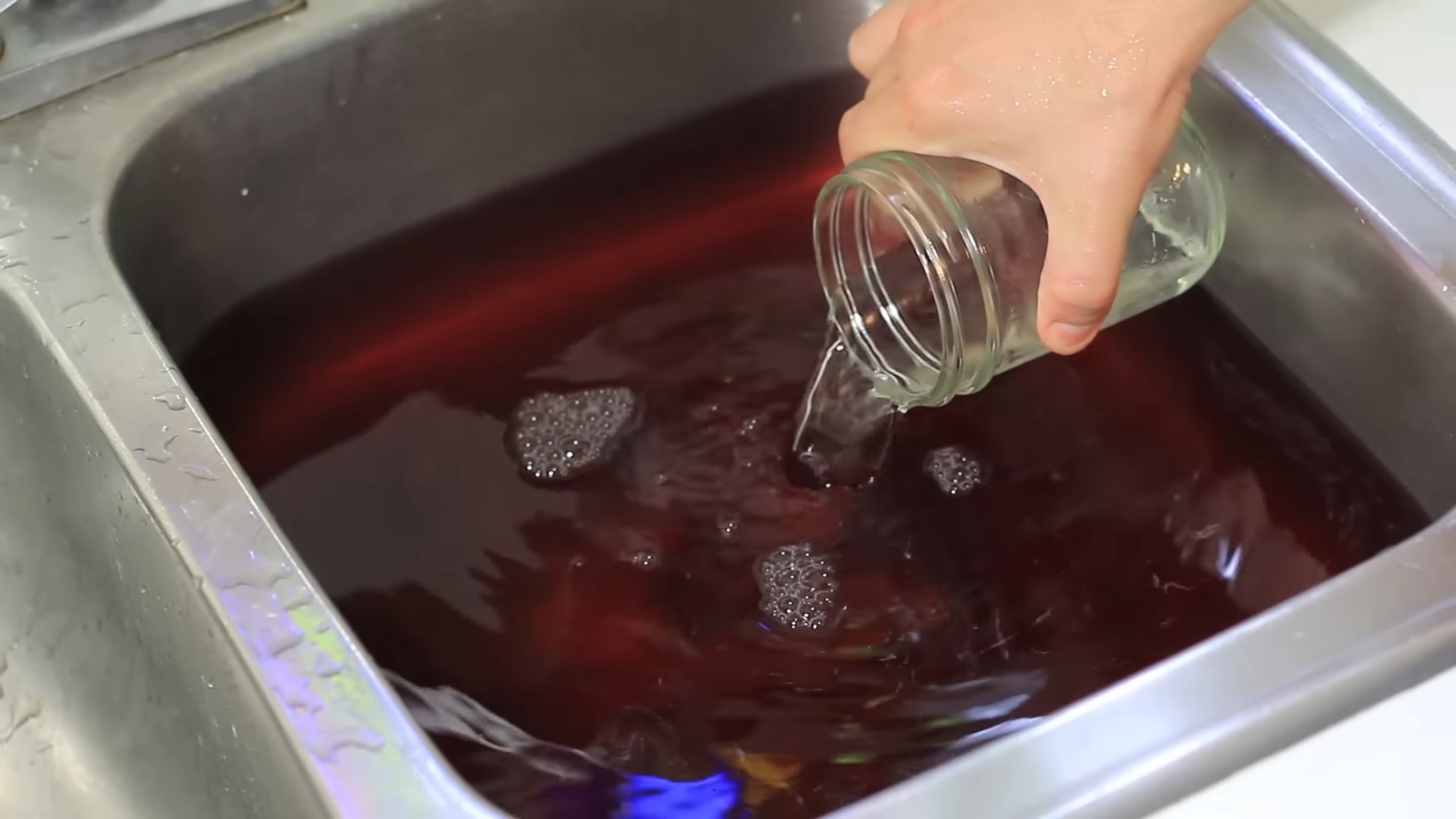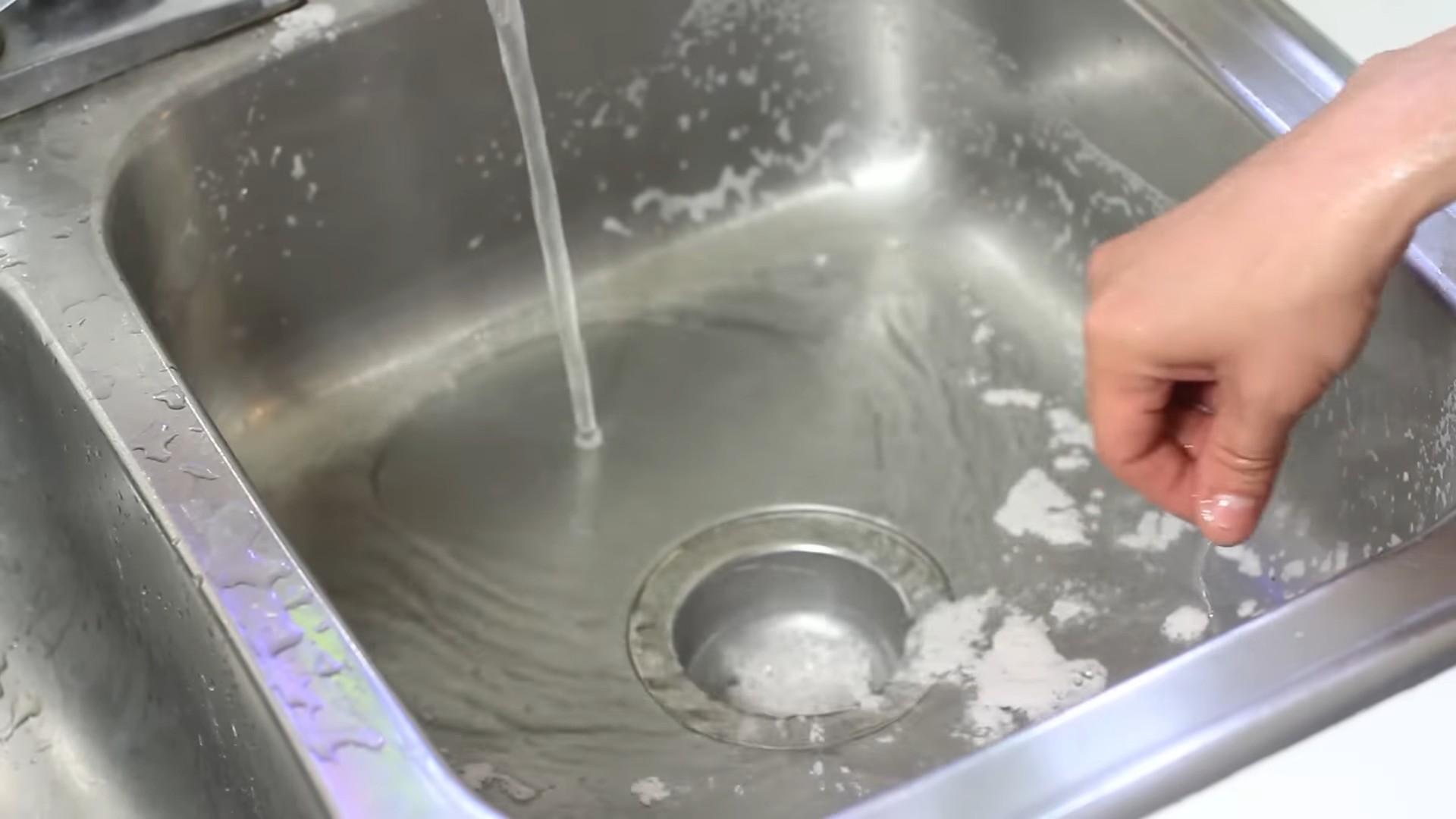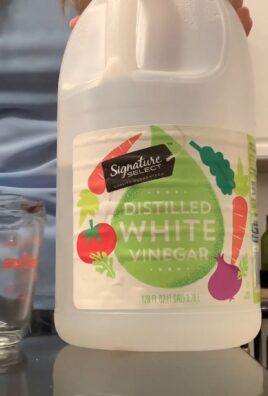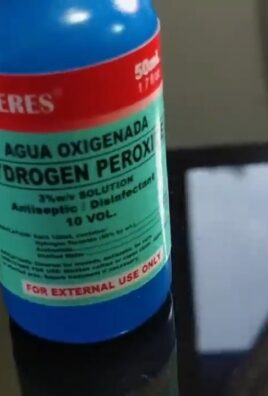White vinegar uses extend far beyond just salad dressing! Are you ready to unlock the surprising potential of this humble kitchen staple? For generations, white vinegar has been a go-to cleaning agent and culinary ingredient, but its versatility in the garden is often overlooked. From ancient Roman households using it to preserve food to modern-day eco-conscious gardeners, vinegar has a rich history of practical applications.
I’m excited to share some incredible DIY tricks that will transform your gardening game. Imagine a world where you can naturally combat weeds, deter pests, and even boost the health of your plants, all with a simple bottle of white vinegar. These aren’t just random hacks; they’re tried-and-true methods that can save you money, reduce your reliance on harsh chemicals, and create a thriving, beautiful garden.
In this article, we’ll dive deep into the many white vinegar uses for your garden, providing you with easy-to-follow instructions and expert tips. Whether you’re a seasoned gardener or just starting out, these DIY tricks will empower you to create a healthier, more sustainable, and more productive outdoor space. Let’s get started and discover the magic of vinegar in your garden!

Unlocking the Magic of White Vinegar: 20+ DIY Hacks to Simplify Your Life!
Hey there, fellow DIY enthusiast! I’m so excited to share with you the incredible versatility of white vinegar. It’s not just for salad dressing, you know! This humble kitchen staple is a powerhouse of cleaning, deodorizing, and even beauty applications. Get ready to be amazed by these simple, effective, and budget-friendly hacks!
Cleaning Power Unleashed
White vinegar’s acidity makes it a fantastic natural cleaner. It cuts through grease, dissolves mineral deposits, and disinfects surfaces without harsh chemicals.
* The Magic Ingredient: Distilled white vinegar (5% acidity) is your best friend here.
* Safety First: Always test vinegar on an inconspicuous area before applying it to the entire surface. Avoid using it on marble, granite, or other natural stone surfaces, as it can etch them. Never mix vinegar with bleach, as this creates toxic fumes.
1. Sparkling Clean Showerhead
Hard water deposits can clog your showerhead, reducing water pressure. Here’s how to fix it:
1. Remove the Showerhead: If possible, detach the showerhead from the shower arm. This makes the process easier.
2. Soak in Vinegar: Fill a plastic bag with white vinegar. Submerge the showerhead completely in the vinegar, securing the bag with a rubber band or twist tie.
3. Wait Patiently: Let it soak for at least 30 minutes, or even overnight for heavily clogged showerheads.
4. Scrub and Rinse: Remove the showerhead from the bag and scrub away any remaining mineral deposits with an old toothbrush. Rinse thoroughly with water.
5. Reattach and Enjoy: Reattach the showerhead and enjoy a revitalized shower experience!
2. Microwave Makeover
Bursts of food and splatters can make your microwave a mess. This simple trick will loosen the grime and make it easy to wipe away.
1. Vinegar Steam Clean: Combine 1 cup of water and 1/4 cup of white vinegar in a microwave-safe bowl.
2. Microwave Magic: Microwave the mixture on high for 3-5 minutes, or until the solution boils and the microwave is filled with steam.
3. Let it Sit: Let the microwave sit, undisturbed, for another 5-10 minutes. The steam will loosen the grime.
4. Wipe Away the Mess: Carefully remove the bowl (it will be hot!) and wipe down the inside of the microwave with a clean cloth or sponge. The grime should come off easily.
3. Sparkling Clean Windows and Mirrors
Forget expensive window cleaners! Vinegar is a natural and effective way to achieve streak-free shine.
1. Vinegar Solution: Mix equal parts white vinegar and water in a spray bottle.
2. Spray and Wipe: Spray the solution onto the window or mirror.
3. Wipe Clean: Wipe with a clean, lint-free cloth or paper towel. For best results, use a microfiber cloth.
4. Deodorize Your Dishwasher
Dishwashers can sometimes develop unpleasant odors. Vinegar can help neutralize those smells.
1. Vinegar Rinse: Place a dishwasher-safe cup filled with 1 cup of white vinegar on the top rack of your empty dishwasher.
2. Run a Cycle: Run the dishwasher on a normal cycle. The vinegar will help to deodorize and clean the interior.
5. Coffee Maker Cleaning
Mineral buildup can affect the taste of your coffee. Vinegar can help descale your coffee maker and restore its performance.
1. Vinegar Solution: Fill the water reservoir of your coffee maker with equal parts white vinegar and water.
2. Brew and Rinse: Run the coffee maker through a full brewing cycle.
3. Rinse Thoroughly: Repeat the process with fresh water to rinse away any remaining vinegar. You may need to run several cycles to completely remove the vinegar smell and taste.
6. Clean Your Cutting Boards
Cutting boards can harbor bacteria. Vinegar’s antibacterial properties make it a great natural cleaner.
1. Vinegar Wash: After washing your cutting board with soap and water, wipe it down with undiluted white vinegar.
2. Let it Sit: Let the vinegar sit for a few minutes to disinfect the surface.
3. Rinse and Dry: Rinse the cutting board with water and allow it to air dry.
7. Laundry Booster and Fabric Softener
Vinegar can be used as a natural laundry booster and fabric softener.
1. Laundry Booster: Add 1/2 cup of white vinegar to your washing machine along with your regular detergent. It helps to brighten colors and remove odors.
2. Fabric Softener: Add 1/4 cup of white vinegar to the fabric softener dispenser. It helps to soften clothes and reduce static cling. Don’t worry, the vinegar smell will dissipate during the drying process.
8. Remove Hard Water Stains
Hard water stains can be unsightly on faucets, shower doors, and other surfaces.
1. Vinegar Soak: Soak a cloth or paper towel in white vinegar and place it over the hard water stain.
2. Wait and Scrub: Let it sit for 30 minutes to an hour, or even longer for stubborn stains.
3. Scrub and Rinse: Scrub the area with a non-abrasive sponge or brush and rinse thoroughly with water.
9. Clean Your Toilet Bowl
Vinegar can help remove stains and deodorize your toilet bowl.
1. Vinegar Pour: Pour 1 cup of white vinegar into the toilet bowl.
2. Let it Sit: Let it sit for at least 30 minutes, or overnight for tough stains.
3. Scrub and Flush: Scrub the bowl with a toilet brush and flush.
Deodorizing Delights
Vinegar is a natural odor absorber, making it perfect for eliminating unwanted smells around your home.
10. Fridge Freshener
An open container of vinegar in the fridge can absorb unpleasant odors.
1. Vinegar Bowl: Place a small bowl filled with white vinegar in your refrigerator.
2. Replace Regularly: Replace the vinegar every few days to keep your fridge smelling fresh.
11. Garbage Disposal Deodorizer
A stinky garbage disposal is no fun. Vinegar can help freshen it up.
1. Vinegar Ice Cubes: Freeze white vinegar in ice cube trays.
2. Grind and Refresh: Drop a few vinegar ice cubes into the garbage disposal and run it until the ice is gone. The vinegar will help to clean and deodorize the disposal.
12. Eliminate Pet Odors
Vinegar can help neutralize pet odors on carpets and upholstery.
1. Vinegar Spray: Mix equal parts white vinegar and water in a spray bottle.
2. Test First: Test the solution on an inconspicuous area of the carpet or upholstery to ensure it doesn’t cause discoloration.
3. Spray and Blot: Lightly spray the affected area with the vinegar solution and blot with a clean cloth.
4. Air Dry: Allow the area to air dry completely.
Beauty and Wellness Wonders
Believe it or not, vinegar can also be used for some surprising beauty and wellness applications.
* Important Note: Always dilute vinegar before applying it to your skin or hair. Perform a patch test on a small area of skin to check for any allergic reactions.
13. Hair Rinse for Shine
A vinegar rinse can help remove buildup from your hair and leave it shiny and smooth.
1. Vinegar Rinse: Mix 1-2 tablespoons of white vinegar with 1 cup of water.
2. Apply After Shampooing: After shampooing and conditioning your hair, pour the vinegar rinse over your hair.
3. Rinse Thoroughly: Rinse your hair thoroughly with water.
14. Soothe Sunburn
Diluted vinegar can help soothe sunburned skin.
1. Vinegar Compress: Mix equal parts white vinegar and cool water.
2. Apply to Sunburn: Soak a clean cloth in the solution and apply it to the sunburned area for 10-15 minutes.
3. Repeat as Needed: Repeat the process several times a day to help relieve pain and inflammation.
15. Foot Soak for Odor and Fungus
A vinegar foot soak can help eliminate foot odor and fight fungal infections.
1. Vinegar Foot Soak: Mix 1 part white vinegar with 2 parts warm water in a basin.
2. Soak Your Feet: Soak your feet in the solution for 15-20 minutes.
3. Dry Thoroughly: Dry your feet thoroughly after soaking.
Gardening Goodness
Vinegar can also be used in the garden for a

Conclusion
So, there you have it! Unlocking the power of white vinegar goes far beyond just cleaning. This simple, inexpensive ingredient is a veritable Swiss Army knife for your home, offering solutions to problems you didn’t even know you had. From banishing stubborn stains to creating all-natural beauty treatments, the versatility of white vinegar is truly remarkable.
Why is this DIY approach a must-try? Because it’s effective, economical, and environmentally friendly. You’re reducing your reliance on harsh chemicals, saving money on expensive commercial products, and contributing to a healthier planet, all while achieving fantastic results. It’s a win-win-win!
But the magic doesn’t stop there. Feel free to experiment and adapt these tips to your specific needs. For instance, if you’re using white vinegar as a fabric softener, try adding a few drops of your favorite essential oil for a subtle, natural fragrance. Lavender, lemon, or eucalyptus can add a refreshing touch to your laundry. When cleaning your coffee maker, consider running a second cycle with plain water to ensure all traces of vinegar are removed. For a more potent cleaning solution, infuse your white vinegar with citrus peels for a few weeks. The citrus oils will boost its cleaning power and leave behind a pleasant scent.
Remember, the key to success with white vinegar is to start with diluted solutions and test on an inconspicuous area first, especially when dealing with delicate fabrics or surfaces. This will help you avoid any unwanted surprises.
We’ve only scratched the surface of what white vinegar can do. The possibilities are endless, and we encourage you to explore and discover new ways to incorporate this amazing ingredient into your daily routine.
Now, it’s your turn! We challenge you to try at least one of these DIY tricks using white vinegar this week. See for yourself the incredible difference it can make. And most importantly, share your experiences with us! Tell us what worked, what didn’t, and any creative variations you came up with. Let’s build a community of white vinegar enthusiasts and unlock even more of its hidden potential together. Your insights could inspire others to embrace this natural and effective solution. Don’t be shy – share your tips and tricks in the comments below! We can’t wait to hear from you.
Frequently Asked Questions (FAQs)
What exactly is white vinegar and is it safe to use around my family and pets?
White vinegar is a solution of acetic acid and water. The acetic acid concentration typically ranges from 5% to 8%. It’s produced through the fermentation of ethanol, which can be derived from various sources like grains, fruits, or vegetables.
Regarding safety, white vinegar is generally considered safe for use around families and pets when used properly and in diluted form. However, it’s crucial to exercise caution. Direct contact with undiluted vinegar can cause skin and eye irritation. Ingestion of large quantities can lead to digestive upset. Always store white vinegar out of reach of children and pets. When using it for cleaning, ensure adequate ventilation to avoid inhaling concentrated fumes. If you have pets that are prone to licking surfaces, rinse thoroughly after cleaning with vinegar. If you have any concerns about using white vinegar around your family or pets, consult with a healthcare professional or veterinarian.
Can I use any type of vinegar for these DIY tricks?
While other types of vinegar, such as apple cider vinegar or balsamic vinegar, have their own unique properties and uses, white vinegar is generally the preferred choice for most DIY cleaning and household applications. This is because white vinegar is clear, odorless, and has a higher acidity level than other vinegars, making it more effective at cleaning, disinfecting, and deodorizing.
Apple cider vinegar, for example, can be used in some beauty applications, but its color and scent may not be desirable for cleaning. Balsamic vinegar, with its dark color and sweet flavor, is definitely not suitable for cleaning! Stick to distilled white vinegar for the best and most predictable results.
Will white vinegar damage my surfaces?
White vinegar is generally safe for use on many surfaces, but it’s essential to exercise caution and test it in an inconspicuous area first, especially when dealing with delicate materials.
Avoid using white vinegar on natural stone surfaces like marble, granite, and limestone, as its acidity can etch and damage these materials. It’s also not recommended for use on waxed furniture, as it can strip the wax finish. Be careful when using it on electronics, as moisture can cause damage. Always dilute white vinegar with water before using it on painted surfaces, as it can potentially dull or discolor the paint. When in doubt, consult the manufacturer’s instructions for the specific surface you’re cleaning.
How do I get rid of the vinegar smell?
The distinctive smell of white vinegar can be off-putting to some people, but the good news is that it dissipates quickly. To minimize the odor, ensure adequate ventilation by opening windows or using a fan while cleaning. You can also add a few drops of your favorite essential oil to your cleaning solution to mask the vinegar smell. Citrus oils like lemon or orange are particularly effective.
Another trick is to rinse the cleaned surface with plain water after using vinegar. This will help remove any lingering vinegar residue and odor. You can also leave a bowl of baking soda in the room to absorb any remaining odors. The vinegar smell typically disappears within a few hours, leaving your home clean and fresh.
What are some other uses for white vinegar that weren’t mentioned in the article?
The versatility of white vinegar is truly astounding! Here are a few more uses you might find helpful:
* **Weed Killer:** Spray undiluted white vinegar directly onto weeds to kill them naturally. Be careful not to spray it on plants you want to keep, as it will kill them too.
* **Rust Remover:** Soak rusty tools or items in white vinegar for several hours or overnight to loosen the rust. Then, scrub with a brush to remove the remaining rust.
* **Egg Stain Removal:** If you’ve spilled raw egg on the floor, pour white vinegar over it and let it sit for a few minutes before wiping it up. This will prevent the egg from solidifying and making it easier to clean.
* **Humidifier Cleaner:** Clean your humidifier regularly with white vinegar to prevent the buildup of mold and bacteria.
* **Garbage Disposal Freshener:** Pour a cup of white vinegar down your garbage disposal and let it sit for 30 minutes to freshen it up and eliminate odors.
* **Showerhead Cleaner:** Soak your showerhead in a bag filled with white vinegar overnight to remove mineral deposits and improve water flow.
These are just a few examples of the many ways you can use white vinegar around your home. With a little creativity, you’ll discover even more uses for this amazing ingredient!



Leave a Comment